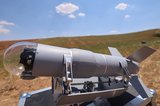What lessons could Europe learn from air power use in Ukraine?
The use of small drones has opened up new possibilities for cost-effective strike but such systems have range and payload limitations. (Photo: Ukraine MoD)
It’s fair to say that June’s remote first-person view (FPV) drone strike on four Russian airfields was totally unexpected. The targeting of bombers that had been a key part of standoff actions against Ukrainian cities was surprising in just about every regard.
The long-term planning to load heavy trucks with uncrewed aerial vehicles (UAVs) and position these thousands of kilometres inside Russia, astonished everyone. The intelligence work to ensure the targets were there would have been a major achievement. Moreover, the mission required multi-mode control systems, involving relatively un-jammable fibre-optic cable, radio and some autonomy so that the probability of
Already have an account? Log in
Want to keep reading this article?
More from Air Warfare
-
![What might next-generation military aircrew training look like?]()
What might next-generation military aircrew training look like?
Changing roles for combat aircraft fleets, the rise of simulation and LVC technologies, and the increasing cost of flight hours could all be leading to a paradigm shift in military pilot training.
-
![2025 air market review: European defence independence, next-gen tech and export concerns dominate]()
2025 air market review: European defence independence, next-gen tech and export concerns dominate
This year’s (geo)political turmoil has challenged many long-prevailing assumptions, leading to far-reaching consequences for air forces and their supplier bases in industry worldwide – with five key trends in review for 2025.
-
![Poland air report: Drones, transport aircraft and tankers dominate potential procurement plans]()
Poland air report: Drones, transport aircraft and tankers dominate potential procurement plans
With a rising defence budget and equipment list, Poland’s air market is set to grow as the country continues to modernise its transport and helicopter fleets while seeking out uncrewed aerial vehicles and loitering munitions.
-
![Portugal signals interest in establishing A-29N final assembly line]()
Portugal signals interest in establishing A-29N final assembly line
As the launch customer for the NATO-configured variant, Portugal also took delivery of the first five A-29N aircraft from its order for 12, placed in 2024.
-
![Podcast: Critical Care episode 5 - Sustaining Europe’s frontline from Heidelberg]()
Podcast: Critical Care episode 5 - Sustaining Europe’s frontline from Heidelberg
As Europe ramps up defence investment in the wake of the Ukraine crisis, the spotlight is turning to how nations sustain their growing fleets.


























